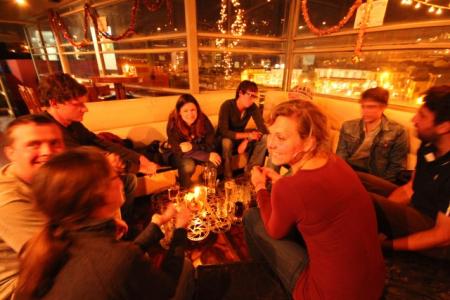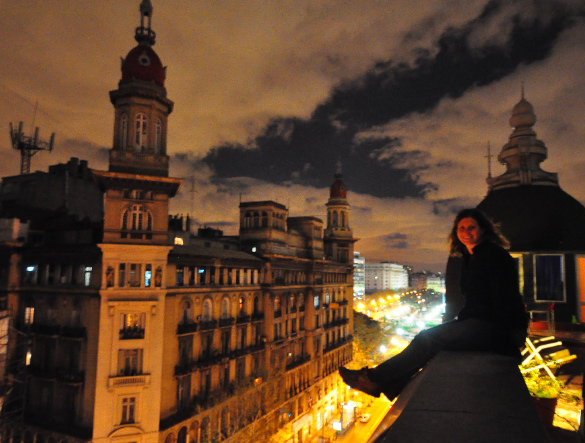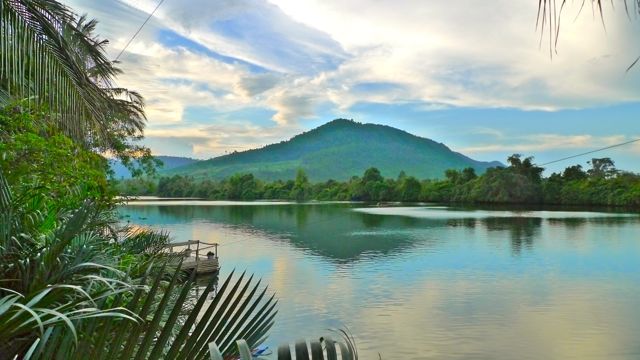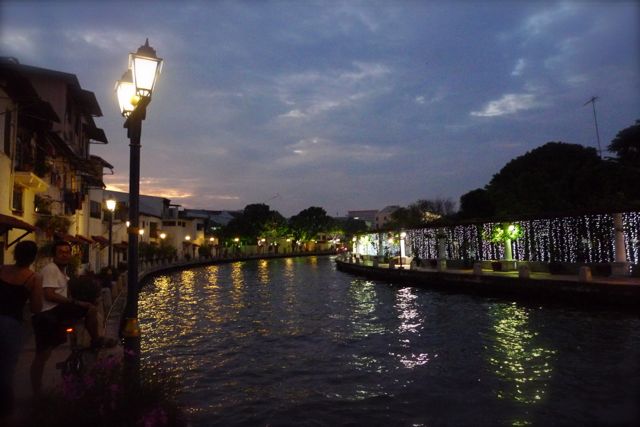I read this article about the world’s most outrageous hotel amenities. They include all kinds of super-posh services that cater to one’s every whim and desire. Like a tanning butler. A fragrance sommelier. A soap concierge — you know, for all those moments when you really want to get clean, but you also need options.
It got me to thinking about my round-the-world trip. I didn’t get any of that fancy stuff! Nobody coddled me, wiped me or sprayed anything on me. At least, not on purpose. But that doesn’t mean my trip was amenity-free either.
None of these things included a sommelier, concierge or butler, but they were amenities all the same:
The Adventure Brew Hostel in La Paz, Bolivia.
Price pre night: $7
Amenities: CARBS! Microbrewed beers, a pancake buffet.
After a month of downing watery Bolivian brew, a free beer with actual flavor seemed like the most novel thing ever. And Saya beer is brewed on site by good people who know what they’re doing.
So what if the hostel showers were tepid and the beds were hard? I drank beer — REAL BEER — all night long. And in the morning, there was a free, all-you-can-eat pancake buffet waiting to sop up my hangover.
***
Ecolodge Sol y Luna in Coroico, Bolivia
Price per night: $14
Amenity: Hot tub. But it’s not what you think.
Backpacking is dirty business. Filthy, actually. One time in Bolivia I found a twig stuck to the back of my knee, and I had no idea how long it had been there. So when my friend and I saw an advertisement for Sol y Luna, it only took two little words to convince us to stray from our planned itinerary: Hot. Tub.
We traveled many, many hours out of our way. When we arrived, we discovered that the ecolodge had a very different idea of hot tub than what we imagined. It was a stone tub, situated outside in the garden. And it was filled by hand, one kettle of boiling water at a time.
But you know what? It was perfectly lovely. It would have been great anyway, but it was especially memorable since I hadn’t felt hot water on my skin in almost two months. The dirt floated away, the heat turned my bones into butter and I was clean for the first time in ages.
***
Hostel Estoril in Buenos Aires, Argentina
Price per night: $15
Amenities: Rooftop bar, free walking tours of the city, social events at night.
I made friends, I socialized, I felt safe. And I don’t know if there’s a more beautiful spot in Buenos Aires than this rooftop bar.
***
Red Chilli Hideaway in Kampala, Uganda.
Price per night: $6
Amenity: A pig as big as a sofa.
Why did they have a pig as big as a sofa? I have no idea.
Why did I find a three-legged cat on my pillow every night? I can’t answer that either.
***
Bodhi Villa in Kampot, Cambodia
Price per night: $4
Amenities: Movies, chill room, floating bar, bioluminescent plankton, illicit activity.
Bodhi Villa almost feels like something I conjured up in a fever dream. There were beaches, crabs, rope swings and Billie Holiday. A sprawling bar opened into a river dock. The scenery was slightly too bright and sharp and unreal, like looking through the wrong lens at the optometrist’s office. At some point, a chubby Cambodian man named James Brown put me on the back of his yellow Vespa and drove me through acres of pepper plantations.
Days were drowsy and often spent in the “chill room,” but the nights exploded with raucous live music. A group of strangers became my closest friends in the world. We drank together. We sang loudly and off-tune. We jumped off the dock and marveled over the neon clouds of bioluminescent plankton that swirled around our limbs.
I was there for days? Weeks? Whatever it was, it was much longer than expected. One morning I woke up and realized I might end up at Bodhi forever if I didn’t get out. I immediately booked a bus bound for Ho Chi Minh City, about 10-12 hours away.
Before I departed, a new friend handed me a sandwich and a joint the size of a lipstick tube.
I politely declined, “Oh, thanks, but I don’t think I want to bring any drugs across borders today.”
“What? You got big plans for the bus?” he said. “Just take it and remember Bodhi … If you can.”
***
Ringo’s Foyer in Malacca, Malaysia
Price per night: $4
Amenity: Bike tour of Malacca.
Almost every night, the owner of this hostel takes all his guests on a bike tour of beautiful Malacca.
It became one of my favorite memories of Malaysia. We carried bikes down skinny stairwells. The hostel owner strapped a radio to his handlebars and blasted Lady Gaga from the tinny speakers. And then we pedaled off into the night, through downtown, down ribbons of waterfront, all the way to a local restaurant that didn’t have a name or a real address. The excursion forged a camaraderie between all of us guests, and I saw things I wouldn’t have found otherwise.
***
Lazy Bird Guesthouse in Incheon, South Korea
Price per night: $19
Amenity: Love.
I arrived in Seoul around midnight. I was too tired to travel an hour all the way into the city, so I booked a night at a guesthouse that is located close to the airport. Everything about this place was marvelous. The owner’s husband, Jackie, picked me up at the airport. My bed was ridiculously comfortable. The shower was hot and strong. The wifi was fast. The coffee was brewed first thing in the morning. There were games, DVDs, a Wii, even traditional Korean costumes for dressing up. And I am not exaggerating when I say this was the cleanest place I’ve ever stayed. It was SPOTLESS.
The hospitality went above and beyond what I expect at a hostel/guesthouse. The owner, Liz, and I had long conversations about our travels and our favorite places around the world. We exchanged e-mail addresses. They took my photo for the guest wall. And then Liz and Jackie practically had to kick me out.
“We can drop you off the train station …”
“Thanks. Maybe in an hour or so.”
After some time passed, they tried again.
“Don’t you want to get into the city …?”
“Uh, yeah. Maybe later.”
Finally, they said I should probably go unless I was going to stay for another night. It actually made me ache to leave. The place felt just like home — only a nicer, cleaner version of it.
A few days later, I received a follow-up e-mail from Liz. She wanted to see how my travels were going, make sure I was safe and see if I needed anything. “Yes!” I was tempted to respond. “I want to pack you up and and take you with me!”
































